 It’s interesting that some people who are so disciplined and focused regarding their financial budget, think nothing of overspending their time budget.
It’s interesting that some people who are so disciplined and focused regarding their financial budget, think nothing of overspending their time budget.
Let me explain what I mean. There are only so many hours in a day, a set number of days in a week, and a measurable number of days in a year. Those hours and minutes never change. These blocks of time shape our lives. They frame when we work, when we sleep, when we eat, and when we play. Yet, many people treat these blocks like hands full of cash just waiting to be spent. They forget that time is finite and has limits.
Many of us know, whether we create definite schedules or just have a rough idea, how our days, weeks, and months will be shaped. Others schedule their whole lives down to the last detail. I’ll bet you know:
- what time you’ll get up each day.
- what days you’ll work.
- when you’ll leave work and go home.
- what time you hope to go to bed.
- your plans for the weekend.
- when you’d like to take a vacation.
Given those facts, you also know:
- roughly how many hours you’ll work this week.
- how many hours of sleep you’ll get tonight.
- how much time you have left to sleep if you wake up in the middle of the night.
Our lives are all about time. We think about it constantly, whether we realize it or not. Tapping your foot because someone is late? You’re thinking about time. Honking your horn because the car in front of you didn’t go when the light changed? You’re thinking about time. How many times did you glance at your watch, clock, or phone today? It’s all about time.
So now that you realize you’re thinking about it, let’s talk about spending it. Time is like money – when you have it, life seems more in control. So why do so many of us spend time like it’s a limitless resource?
Time is the same for all of us. We all have the same amount of time in our “wallets.” We all have the same numbers of seconds, minutes, hours, and days. Yet, I see people who overspend their time budgets everywhere I go.
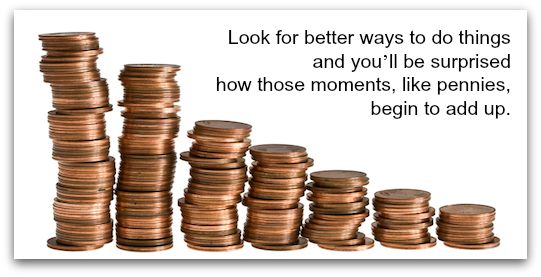 Have you ever thought about what mismanaged time is doing to you and those around you? Let’s start with your health. Are you eating right or just grazing on whatever you can find? Are you sleeping well or enough? Is your body reacting to the stress with pain, skin issues, or illness? What about your relationships with others? Are your irritable, impatient, and withdrawn? Are you missing out on family events? How much time do you get to spend with your friends? For that matter, when did you last take any time for yourself?
Have you ever thought about what mismanaged time is doing to you and those around you? Let’s start with your health. Are you eating right or just grazing on whatever you can find? Are you sleeping well or enough? Is your body reacting to the stress with pain, skin issues, or illness? What about your relationships with others? Are your irritable, impatient, and withdrawn? Are you missing out on family events? How much time do you get to spend with your friends? For that matter, when did you last take any time for yourself?
If the answers to those questions are negative ones, it’s time to make some changes before you lose your mental and physical health, relationships, or job. There are ways to stop that flood of overspending, but like anything else, you have to be honest with yourself and assert some discipline.
Know your limits
You need to eat and sleep. To nurture your relationships, you need to set time aside for those you love. You need to pick your kids up from school. You need to set time to take care of yourself. That means you need a reasonable schedule and you need to stick to it. That doesn’t mean you have to be inflexible, but if you’re in time trouble, you need to be as ruthless with your time spending as you would your cash if you were deep in debt. You need to retrain yourself and that means that at first, there is no bending of the rules you set for yourself. Eventually, with practice, you may be able to lighten up on the reins, but until then, stick to the plan. How will you know when you’ve achieved the proper balance? Simple. Ask your doctor, family, and co-workers. When they give you the thumbs up, you can ease up a bit.
Create an emergency fund
Setting a schedule or framework builds in the gift of time. When you set time goals and stick to them, you suddenly have time available at the end of your day. No, that doesn’t mean you can start spending it like a $10.00 bill you discovered in your jacket pocket. That time is emergency money, like a credit card that you use only for dire straits. Use that time to get other scheduled tasks done ahead of schedule, so if something urgent comes up (and it will), like a family emergency – you can handle it with limited effect to those who are depending on you.
Become a master of efficiency
Doing things the same old way has gotten you into this mess. Are you using your time properly? Just because it’s the “way you’ve always done it” doesn’t mean it’s the best way. Finding better ways to do tasks reduces their power over you. Sometimes you do a task the most efficient way, but at the wrong time of day, and it eats up valuable minutes.
Do you always put that phone call off because you’re uncomfortable? Do it first and get it out of the way so you don’t spend the rest of your day dreading it. Some tasks can be made easier with technology. Look for better ways to do things and you’ll be surprised how those moments, like pennies, begin to add up.
Eliminate procrastination from your vocabulary
Maybe you’ve heard the saying, “I can’t wait to procrastina…” I love that joke, but it’s also so true. Think of all the time we waste by putting things off. We waste time just thinking of ways to avoid a task. We waste even more by trying to think up ways to justify it to ourselves. Some things are just always going to test your nerve, your resolve, or your patience. Just do them and get them over with, then move on to the good stuff as a reward.
Accept that sometimes the answer is, “No.”
I remember asking my mom for something when I was little. I can’t remember what it was, or even why I wanted it (which shows how important it was, right?). What I do remember is what she told me when I asked why I couldn’t have it. She simply (and not unkindly) said, “Honey, sometimes the answer is ‘no.’”
It was an important lesson then and it still matters now. Sometime you have to say “no.” When you make a promise you can’t keep, it’s more than an inconvenience – it’s a breach of trust. Keep it up and your word is worthless. Be realistic with your expectations and abilities. Know when to say that more time or help is needed – or even the reality that you can’t do it. Give the other person a chance to pursue other options. They won’t look down upon you for being honest – they’ll be glad you didn’t leave them high and dry when you couldn’t keep your promise.
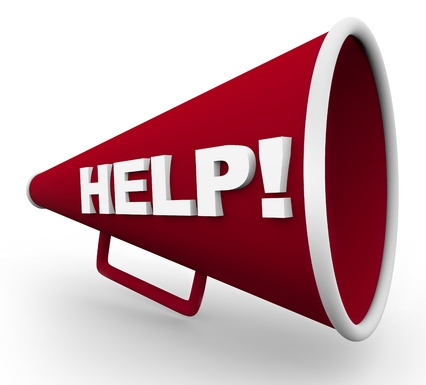 Know when to ask for help
Know when to ask for help
This goes hand in hand with the previous point. Maybe you can’t do a task alone, but with the right help…? You still have worth and value even if you need assistance. Knowing that you need help lets others know that you understand the problem and have a plan.
Asking for help can actually save time. Two people carrying in all those grocery bags will get the job done a lot quicker, right? Just because you can do something alone doesn’t necessarily mean you should.
Be present
Being present means you are paying attention to the task at hand, not the next thing you’re worrying about. With proper planning, you will be able to compartmentalize tasks a little easier. That means that you can get things done in the time allotted. Being present also means understanding that loved ones need you just as much as those tasks you are trying to get done. When you can’t remember the last time you tucked your child in at night or thought to give your spouse a kiss goodnight, things need to change.
Respect boundaries
This is a big one. Know your limits AND those of others. Do you have deadlines? Meet them especially if you’re part of a chain of events. If you’re late, they will be, too. If they can’t make up the time downstream, the end result will be late. People who plan can often help those who don’t, but they won’t for long.
Poor planning on your part does not necessitate an emergency on theirs
If you overspent your time, it creates a ripple effect on others involved. If you created an emergency because of poor planning and execution, don’t always expect others to bail you out. Mutual respect breeds trust and a solid team. When we all work together, everyone wins.
Time can be a beautiful thing. When you have it, you can appreciate the loveliness of the world around you. You can enjoy time spent with others. You can actually be present with those who matter most. When you are a slave to time because you failed to control your misspending of this finite resource, you create a prison for yourself. Luckily, there is a key… YOU!
Do you sometimes struggle with time management? Jump over to the Learn2GroomDogs Facebook page and tell us about it!
Guest blogger
~Joelle Asmondy
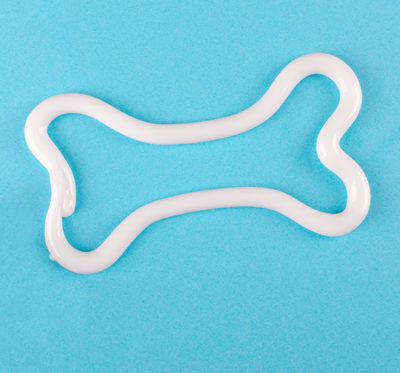 While February is the “official” month of Pet Dental Awareness, keeping canine (and feline) teeth clean and breath fresh is a year-round proposition. That’s because poor oral hygiene can cause a number of issues for dogs and cats — and they can’t tell us when it hurts. Approximately 84 percent of dogs and 70 percent of cats in the U.S. will develop some form of periodontal disease by the time they’re three years old, experts say.
While February is the “official” month of Pet Dental Awareness, keeping canine (and feline) teeth clean and breath fresh is a year-round proposition. That’s because poor oral hygiene can cause a number of issues for dogs and cats — and they can’t tell us when it hurts. Approximately 84 percent of dogs and 70 percent of cats in the U.S. will develop some form of periodontal disease by the time they’re three years old, experts say.

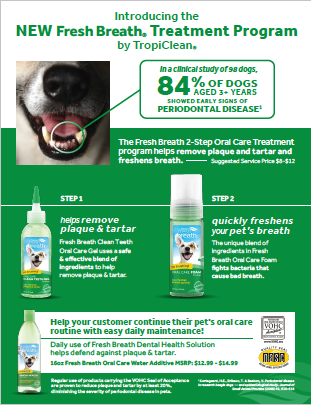
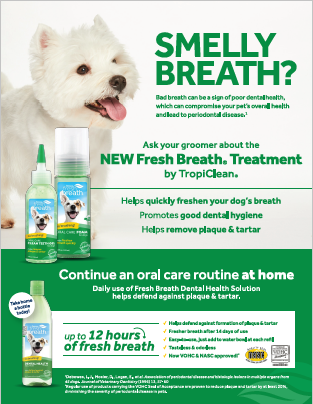
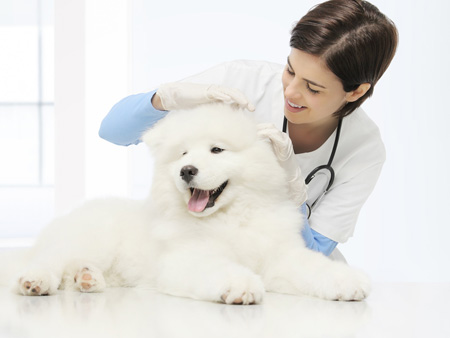 As summertime approaches, so does the anniversary of the worst outbreak of Canine Influenza the country has seen. In the summer of 2018, numerous pet care facilities in Paragon’s home state of Michigan closed temporarily, required vaccinations and/or orchestrated mass vaccination efforts to slow down the spread of Canine Influenza H3N2 strain, including our own Whiskers Pet Resort and Spa. Is your facility ready for 2019?
As summertime approaches, so does the anniversary of the worst outbreak of Canine Influenza the country has seen. In the summer of 2018, numerous pet care facilities in Paragon’s home state of Michigan closed temporarily, required vaccinations and/or orchestrated mass vaccination efforts to slow down the spread of Canine Influenza H3N2 strain, including our own Whiskers Pet Resort and Spa. Is your facility ready for 2019?




 In many of my business lectures, I ask my audience how many of them take regular vacations. I’m always shocked when I see how many pet professionals don’t schedule vacations or downtime for themselves.
In many of my business lectures, I ask my audience how many of them take regular vacations. I’m always shocked when I see how many pet professionals don’t schedule vacations or downtime for themselves.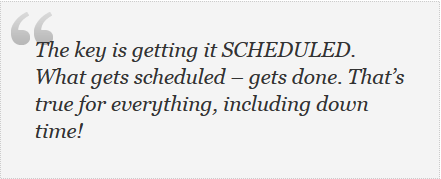
 Full Days – Book a day just to do something fun and special. You might opt to include only yourself. Or plan an activity with friends. Or with family. Many times, special days don’t require money but they do require time and planning.
Full Days – Book a day just to do something fun and special. You might opt to include only yourself. Or plan an activity with friends. Or with family. Many times, special days don’t require money but they do require time and planning.
 P.S. How do you unplug? If you don’t – or can’t – tell us why.
P.S. How do you unplug? If you don’t – or can’t – tell us why. 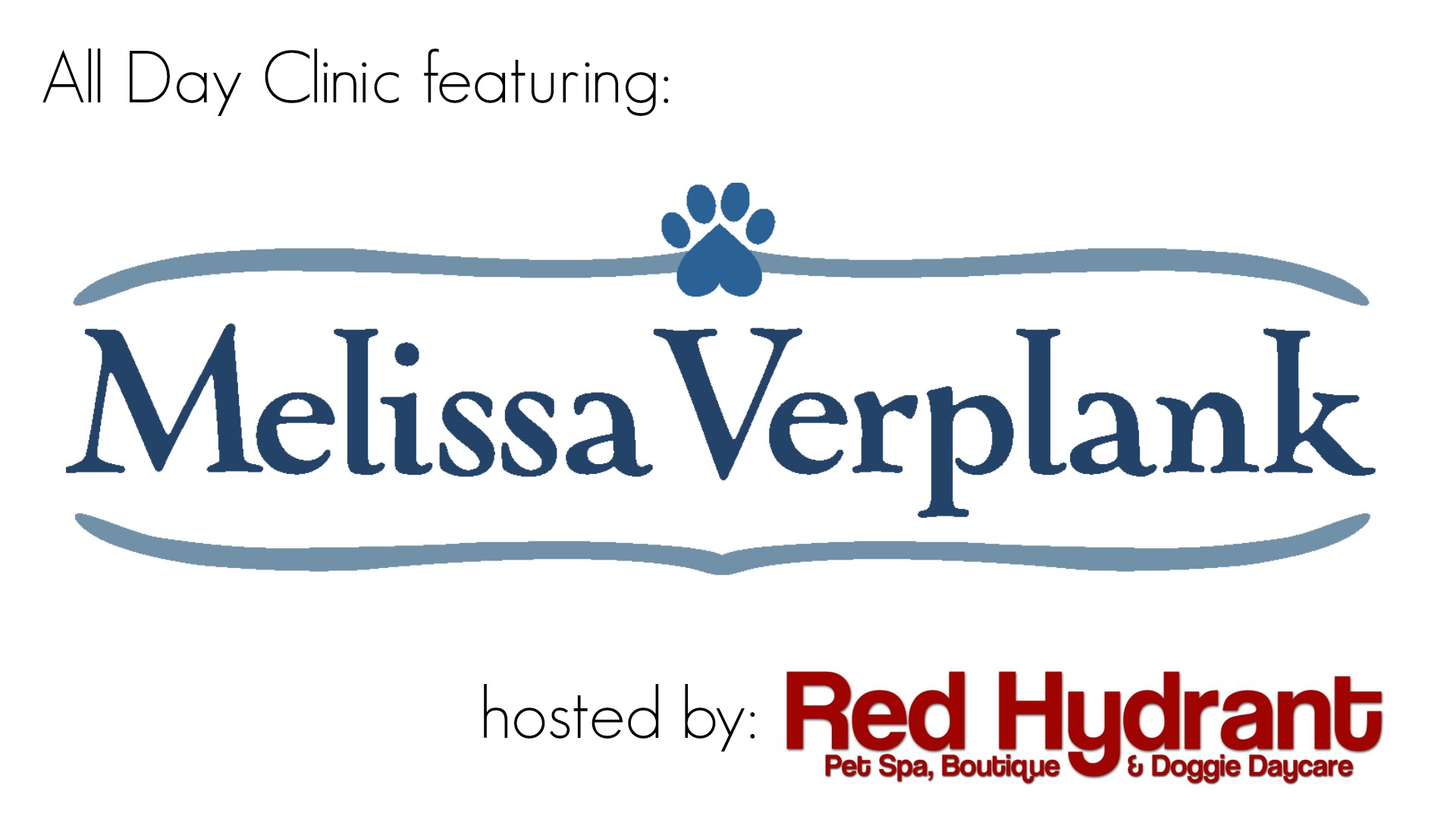


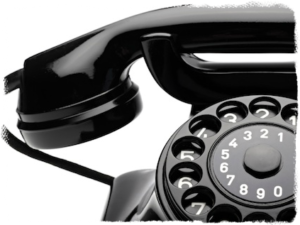


 Have you ever thought about what mismanaged time is doing to you and those around you? Let’s start with your health. Are you eating right or just grazing on whatever you can find? Are you sleeping well or enough? Is your body reacting to the stress with pain, skin issues, or illness? What about your relationships with others? Are your irritable, impatient, and withdrawn? Are you missing out on family events? How much time do you get to spend with your friends? For that matter, when did you last take any time for yourself?
Have you ever thought about what mismanaged time is doing to you and those around you? Let’s start with your health. Are you eating right or just grazing on whatever you can find? Are you sleeping well or enough? Is your body reacting to the stress with pain, skin issues, or illness? What about your relationships with others? Are your irritable, impatient, and withdrawn? Are you missing out on family events? How much time do you get to spend with your friends? For that matter, when did you last take any time for yourself? Know when to ask for help
Know when to ask for help
 On leash, keep mild tension on the lead. Not so much that you are choking the dog, but enough so that you can control the pet. Once you know the pet, you will probably be able to relax the lead tension if they are mild-mannered and well-behaved. Adjust the tension of the grooming loop so that there is a very slight amount of slack when the dog is standing comfortably.
On leash, keep mild tension on the lead. Not so much that you are choking the dog, but enough so that you can control the pet. Once you know the pet, you will probably be able to relax the lead tension if they are mild-mannered and well-behaved. Adjust the tension of the grooming loop so that there is a very slight amount of slack when the dog is standing comfortably. How in the world do dog groomers and pet stylists get burned out?
How in the world do dog groomers and pet stylists get burned out? Set a realistic goal. The target could be related to reaching a sales goal. What about a customer satisfaction goal like improving client retention rates or rebooking appointments at checkout? Look at sprucing up and reorganizing your salon so it’s more pleasant and easier to work in. Maybe you want to be officially certified in some area that would lend credibility to what you do professionally. Enter a grooming competition – or work toward becoming a consistent winner in the contest area. All of these are super goals, but it’s just the tip of the iceberg. Finds goals that motivate YOU.
Set a realistic goal. The target could be related to reaching a sales goal. What about a customer satisfaction goal like improving client retention rates or rebooking appointments at checkout? Look at sprucing up and reorganizing your salon so it’s more pleasant and easier to work in. Maybe you want to be officially certified in some area that would lend credibility to what you do professionally. Enter a grooming competition – or work toward becoming a consistent winner in the contest area. All of these are super goals, but it’s just the tip of the iceberg. Finds goals that motivate YOU.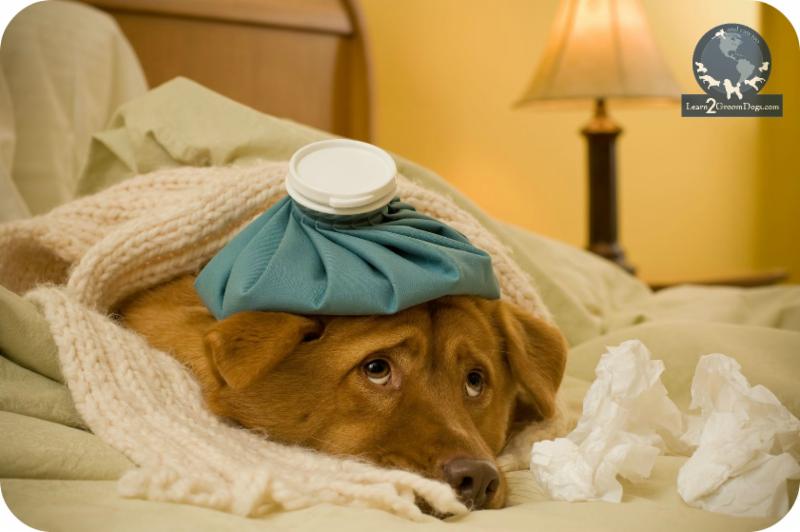 If you’ve been watching the news lately, you have probably heard about the newest illness threatening our pets. Canine influenza (CI), or dog flu, is a highly contagious infection that can have serious implications not only for our pets, but for your business and our industry.
If you’ve been watching the news lately, you have probably heard about the newest illness threatening our pets. Canine influenza (CI), or dog flu, is a highly contagious infection that can have serious implications not only for our pets, but for your business and our industry.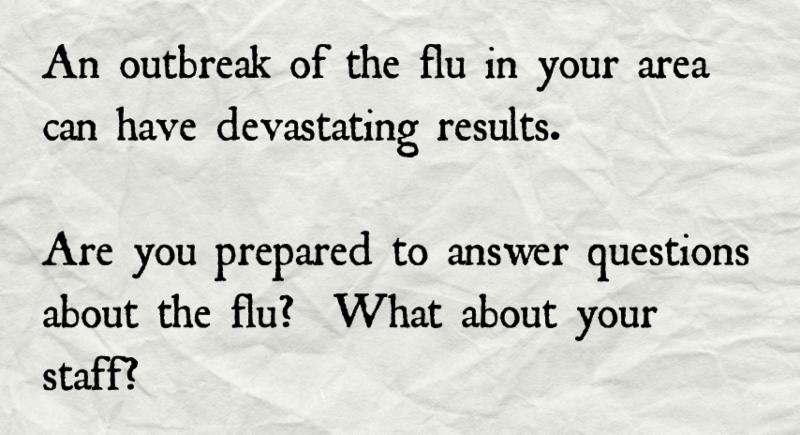 Preventing the Flu: Step One
Preventing the Flu: Step One